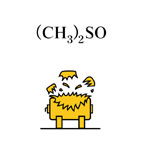| Case Name |
Explosion of the co-existing system of epichlorohydrin and dimethylsulfoxide in epoxy resin manufacturing at the waste treating plant |
| Pictograph |

|
| Date |
January 1, 1985 |
| Location |
Chemical Factory |
| Overview |
An explosion occurred suddenly when the safety valve for heating steam was adjusted during distillation to treat waste liquid generated in the epoxy resin manufacturing process. Heat from ECH polymerization in waste liquid was removed by vaporization of ECH at the beginning of the distillation. As ECH decreased, temperature rose and decomposition of dimethylsulfoxide (DMSO), etc. was caused. Checking the safety valve distracted workers' attention from the temperature rising. In the case of an exothermic reaction, it is necessary to calculate the quantity of heat to be removed, check the possibility of secondary decomposition reaction, and prepare for emergency cooling, etc.. |
| Incident |
An explosion occurred during distillation to treat waste water generated in an epoxy resin manufacturing process. |
| Processing |
Manufacture |
| Individual Process |
Distillation |
| Process Flow |
Fig2.Unit process flow
|
| Substance |
Epichlorohydrin, Fig3 |
| Dimethyl sulfoxide, Fig4 |
| Type of Accident |
Leakage, Burst containment |
| Sequence |
An explosion suddenly occurred when the safety valve for heating steam was adjusted during distillation to treat waste water generated in the epoxy resin manufacturing process. |
| Cause |
Epichlorohydrin (ECH) in waste liquid was polymerized at the bottom of the distillation column, and heat from ECH polymerization was removed by vaporization of ECH at the beginning of distillation. The boiling point of the contents rose as ECH decreased. Decomposition of dimethylsulfoxide (DMSO), etc. was caused by the temperature rising. When the bottom temperature rose as distillation advanced, excessive steam was erroneously supplied, which promoted concentration and caused the temperature rising excessively. |
| Knowledge Comment |
Distillation is one type of the concentration processes. The bottom temperature rises if distillation advances by batch distillation. This may cause runaway reactions and decomposition accidents. Reviewing past accidents is effective. |
| Background |
The possibility and mechanism of a dangerous reaction of the chemical substances for distillation were not understood beforehand.
The safety valve should not have been adjusted during operation. It is assumed that the composition of substances at the bottom became heavy and temperature rose, while workers' attention was distracted by adjusting the safety valve. The accident was caused by human error due to a lack of education. |
| Reason for Adding to DB |
Example of accident caused due to a lack of awareness of reaction hazards in the waste liquid treatment process |
| Scenario |
| Primary Scenario
|
Poor Value Perception, Poor Safety Awareness, Insufficient Safety Countermeasure, Organizational Problems, Poor Management, Inadequate Operation Management, Insufficient Analysis or Research, Insufficient Prior Research, No Study on Reaction Danger, Polymerization Reaction, Regular Operation, Erroneous Operation, Delay of Work, Bad Event, Chemical Phenomenon, Abnormal Reaction, Secondary Damage, External Damage, Explosion, Bodily Harm, Death, Bodily Harm, Injury, Loss to Organization, Economic Loss
|
|
| Sources |
Masamitsu Tamura. Wakakura Masahide. Explosion of co-existing systems of epichlorohydrin with dimethylsulfoxide. Reaction danger. -Accident case and analysis - p.36(1995)
|
| Number of Deaths |
1 |
| Number of Injuries |
1 |
| Physical Damage |
The factory partially burned down. Distillation facilities were completely destroyed. |
| Multimedia Files |
Fig3.Chemical formula
|
|
Fig4.Chemical formula
|
| Notes |
Usual operation |
| Field |
Chemicals and Plants
|
| Author |
WAKAKURA, Masahide (Kanagawa Industrial Technology Research Institute)
TAMURA, Masamitsu (Center for Risk Management and Safety Sciences, Yokohama National University)
|
|